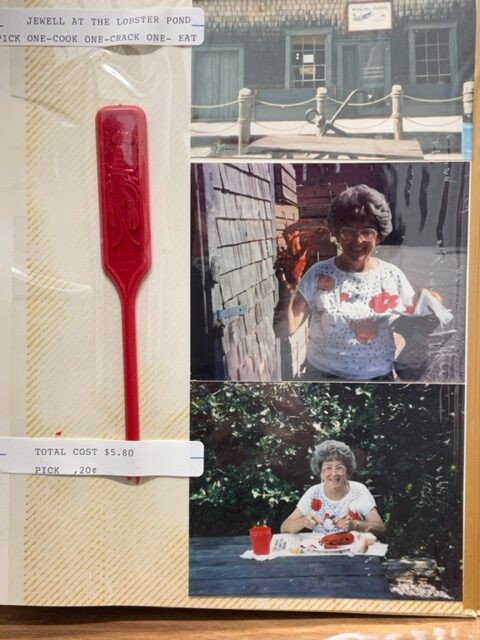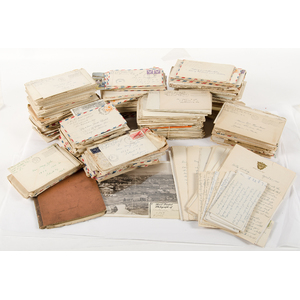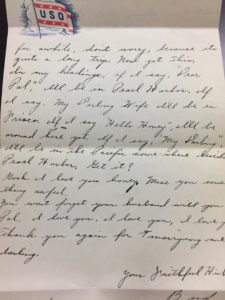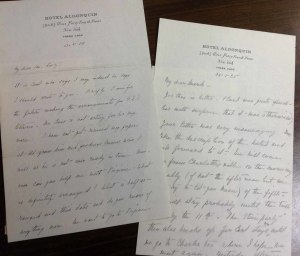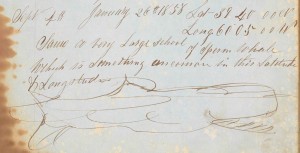Note: This post was written by Savannah Etzler as part of her internship through Simmons University with Book Arts, Archives, & Rare Books in Boatwright Library. Savannah also processed the Ratliff collection and curated an exhibit about the collection’s football ephemera.
The Earl and Jewell Ratliff Collection contains University of Richmond memorabilia, service awards, ephemera, photographs, and postcards representing the life of Earl and Jewell Ratliff and their support of the University of Richmond, volunteer organizations, and their passion for travel. On April 10, 1926, Earl was born in McComb, Mississippi, and in 1944 he received his high school diploma from Woodrow Wilson High School in Portsmouth, Virginia. Following his service in the Army, Earl and Jewell were married in Newport News, Virginia on March 24, 1951, the same spring that Earl graduated from the University of Richmond with a Bachelor of Science in Business Administration. Jewell was born on September 7, 1929 in Jacksonville, Florida and graduated from Woodrow Wilson High School in 1946 before beginning work at the C&P Telephone Company, where she would work for over 36 years.
Earl was a guard for the University of Richmond football team in 1949 and was known as one of the ‘Portsmouth Boys,’ a group of students hailing from the nearby city. His participation in Spider athletics is documented in event programs, newspaper clippings, and football rosters that provide valuable insight into the university’s history. Between the 1960’s and the 1990’s, Earl and Jewell continued to support the university’s athletic program, attending many sporting events and amassing a substantial collection of tickets and sideline passes. The couple were also involved in the Spider Club and participated in the Homecoming Action Committee as documented in their collection of university ephemera. These materials are evidence of the legacy of alumnae support that continues to shape the university.
The couple were avid travelers and preserved their memories in the pages of several scrapbooks, which detail their trips across the United States, Mexico, and Canada during the 1990’s. Peppering these pages are labels that identify sites, note travel arrangements, and preserve special memories, and it is here that Earl and Jewell’s personalities and sense of humor shine through the passage of time. The following images reveal the charm of this collection, that of a unique couple who enthusiastically pursued their passions and found joy not only in the natural wonders of the world, but also the whimsy of the mundane. These annotations, whether documenting exceptional meals, amusing signs, or the beauty of the U.S. National Parks, provide an intriguing peek into the experiences of travel enthusiasts during the 90s. Together, Earl and Jewell explored the continent and documented their adventures, leaving behind a valuable collection which allows us to see world through their eyes.
This collection was acquired as part of an estate donation upon Jewell’s passing in 2016. This collection represents the couple’s posthumous support of the University of Richmond and its students.
